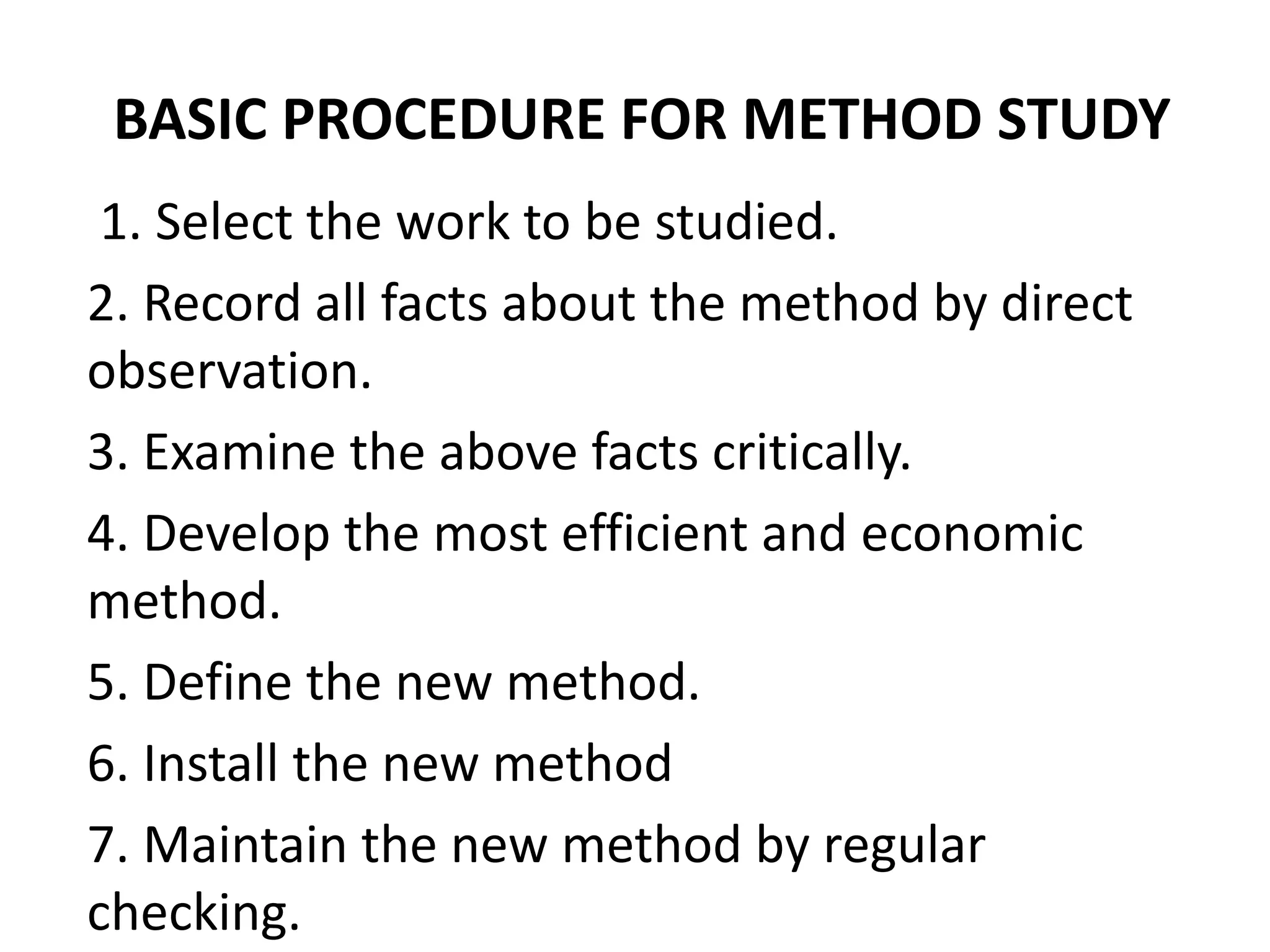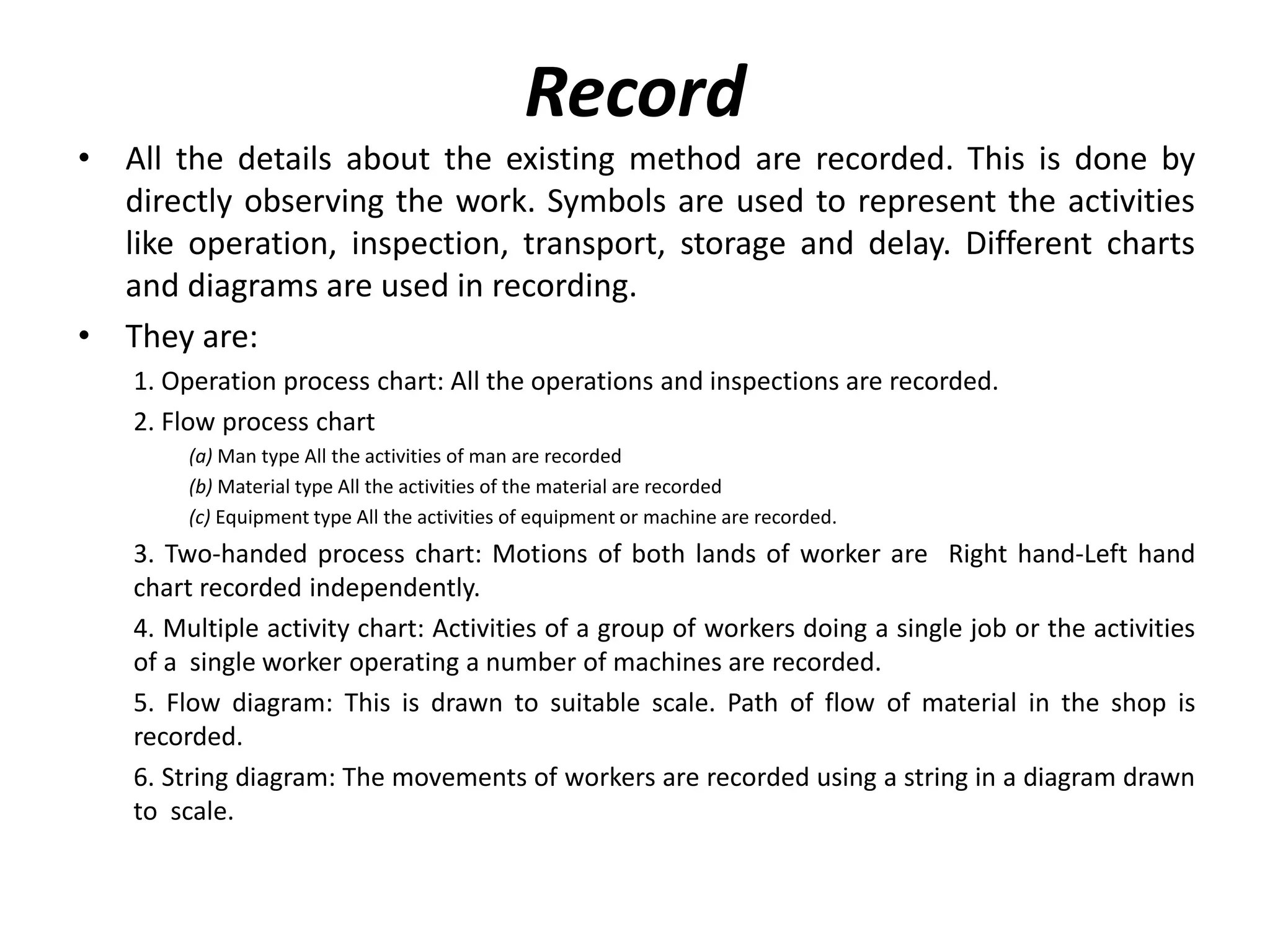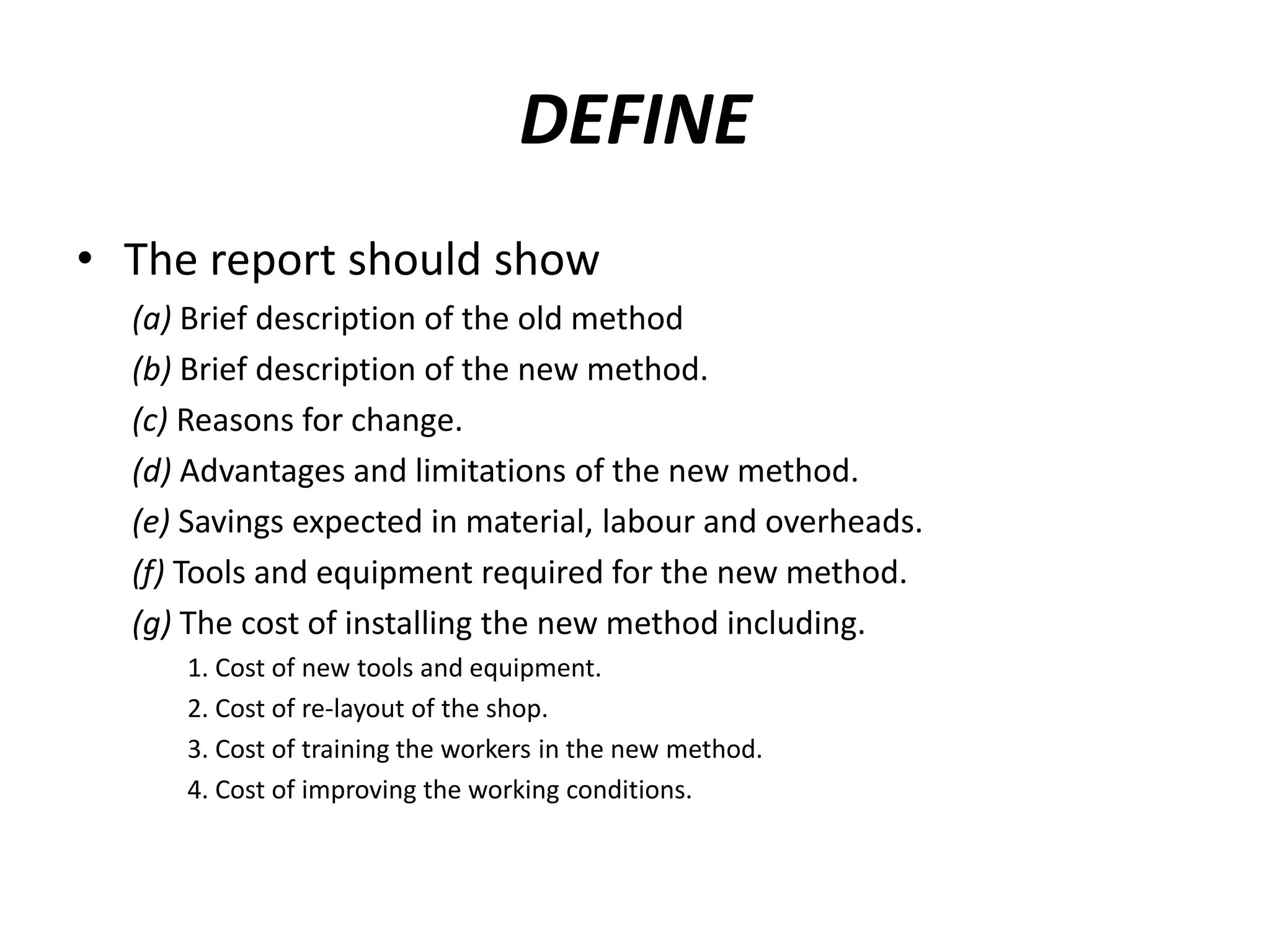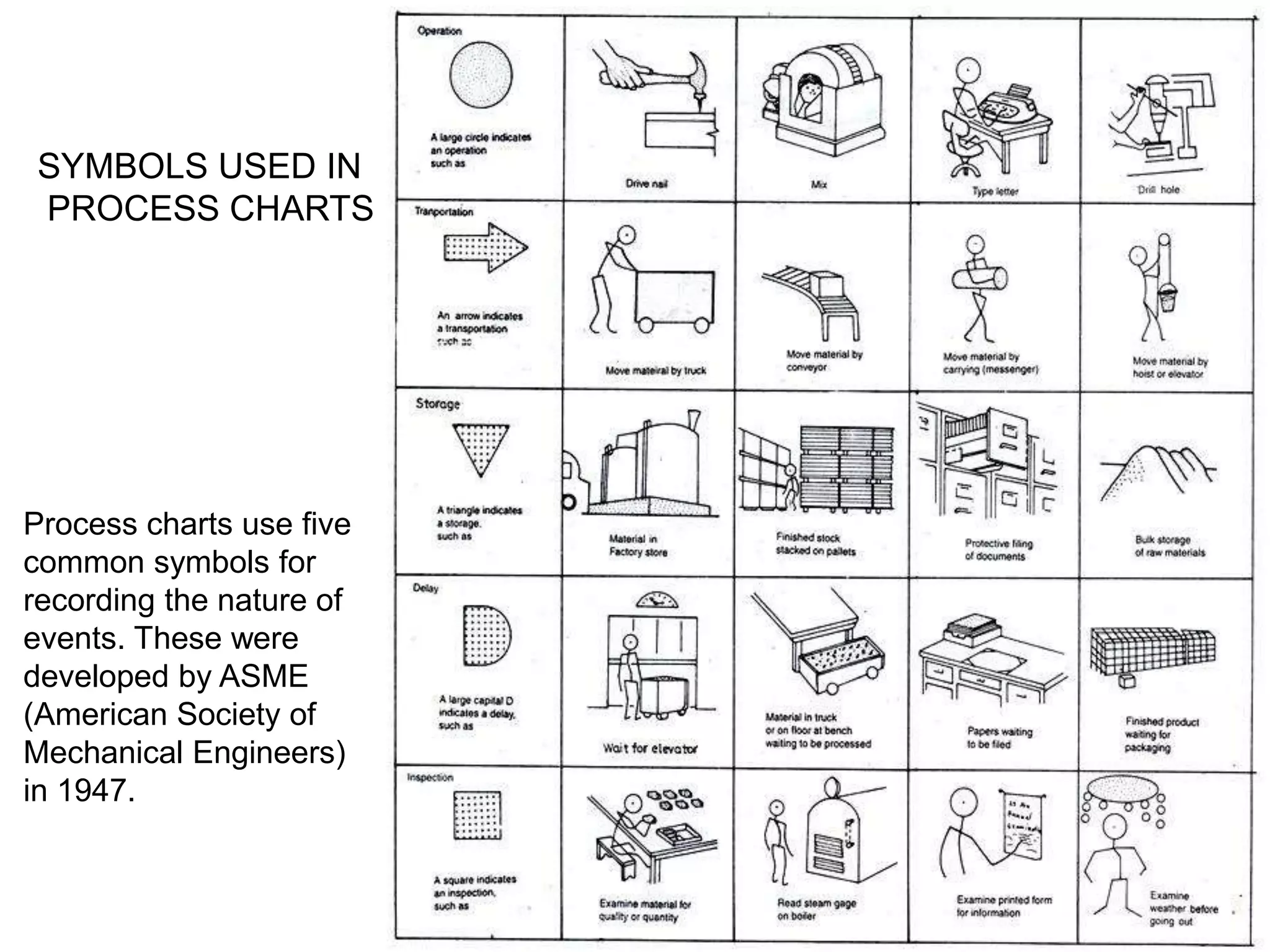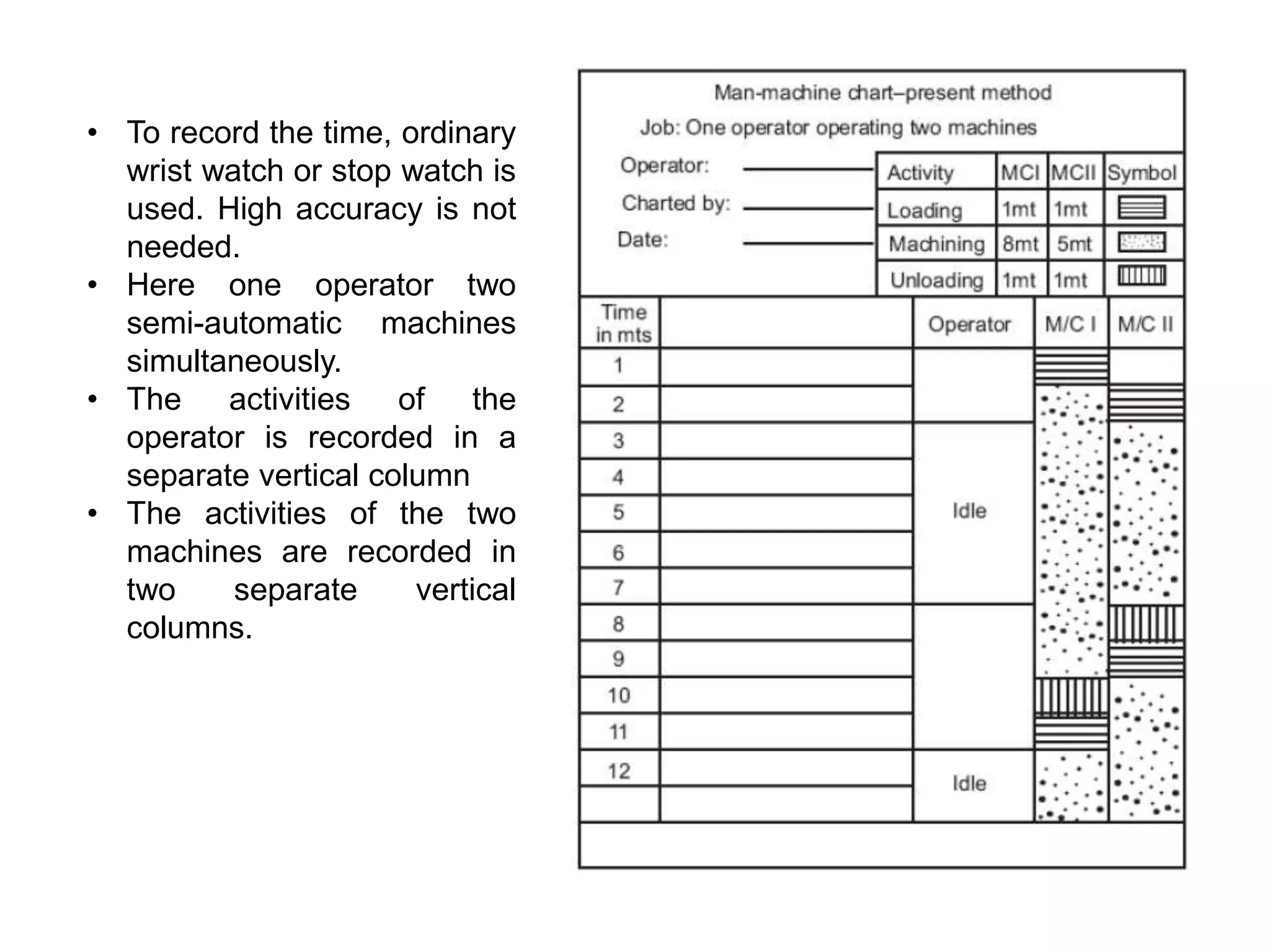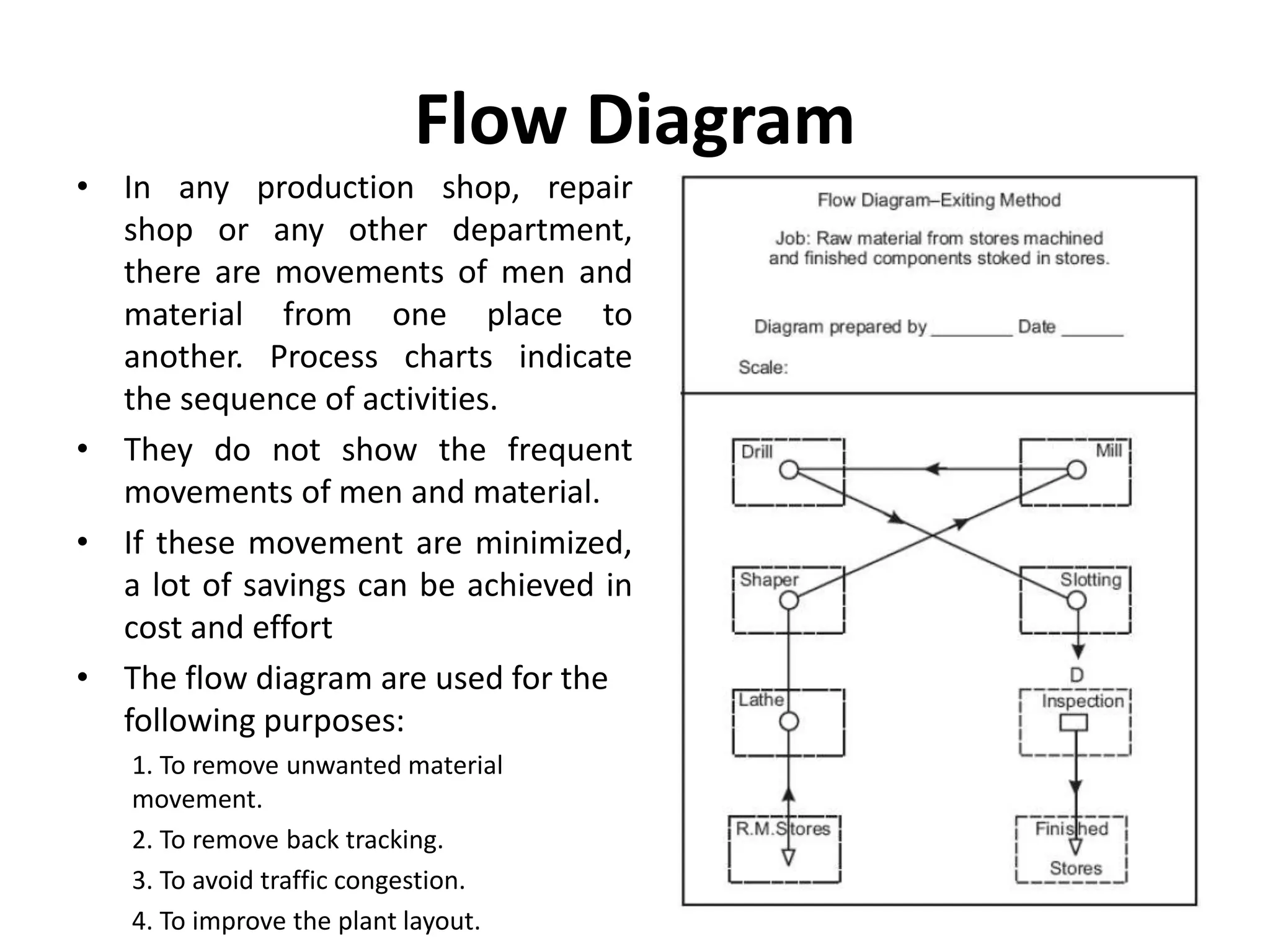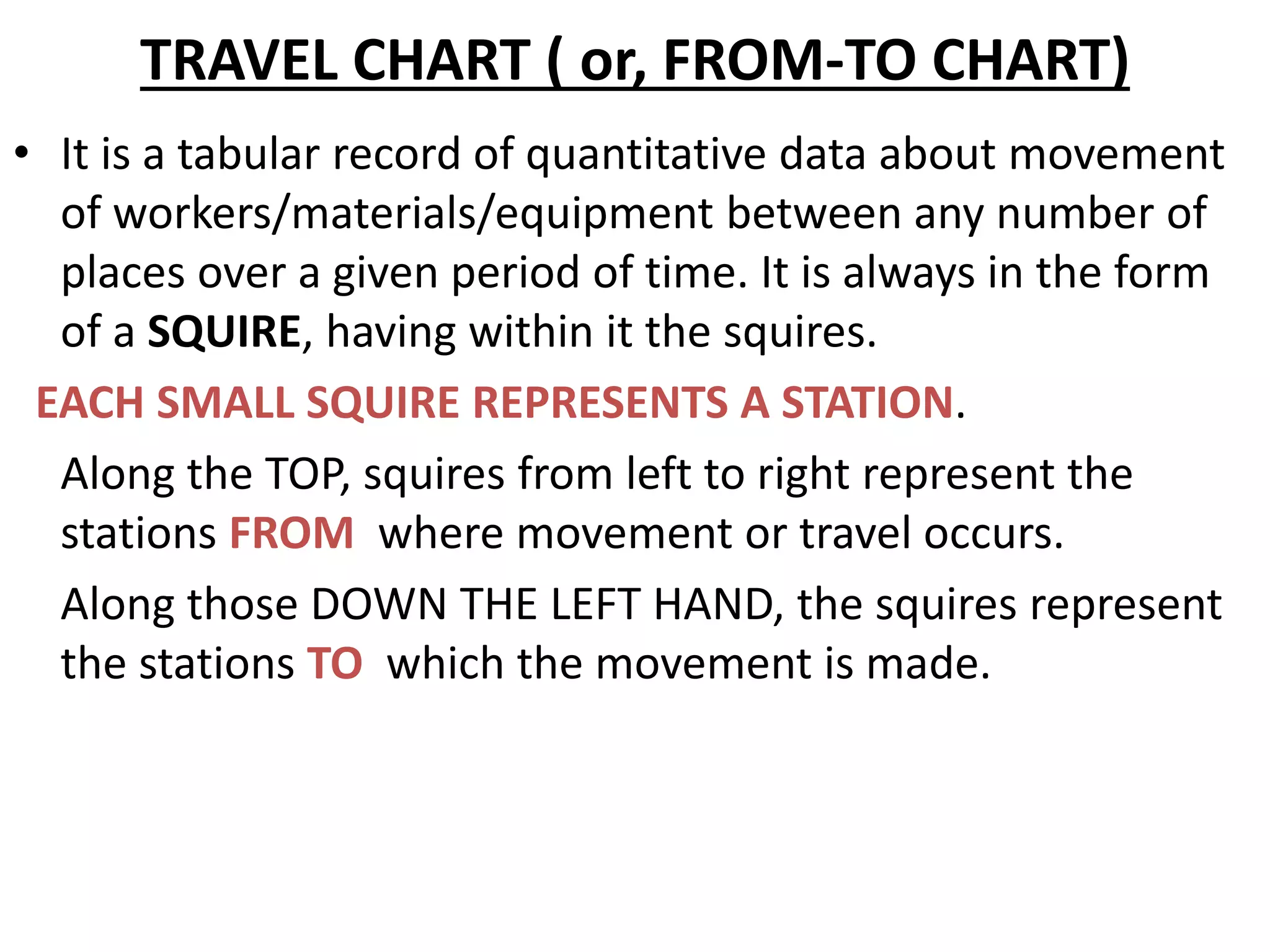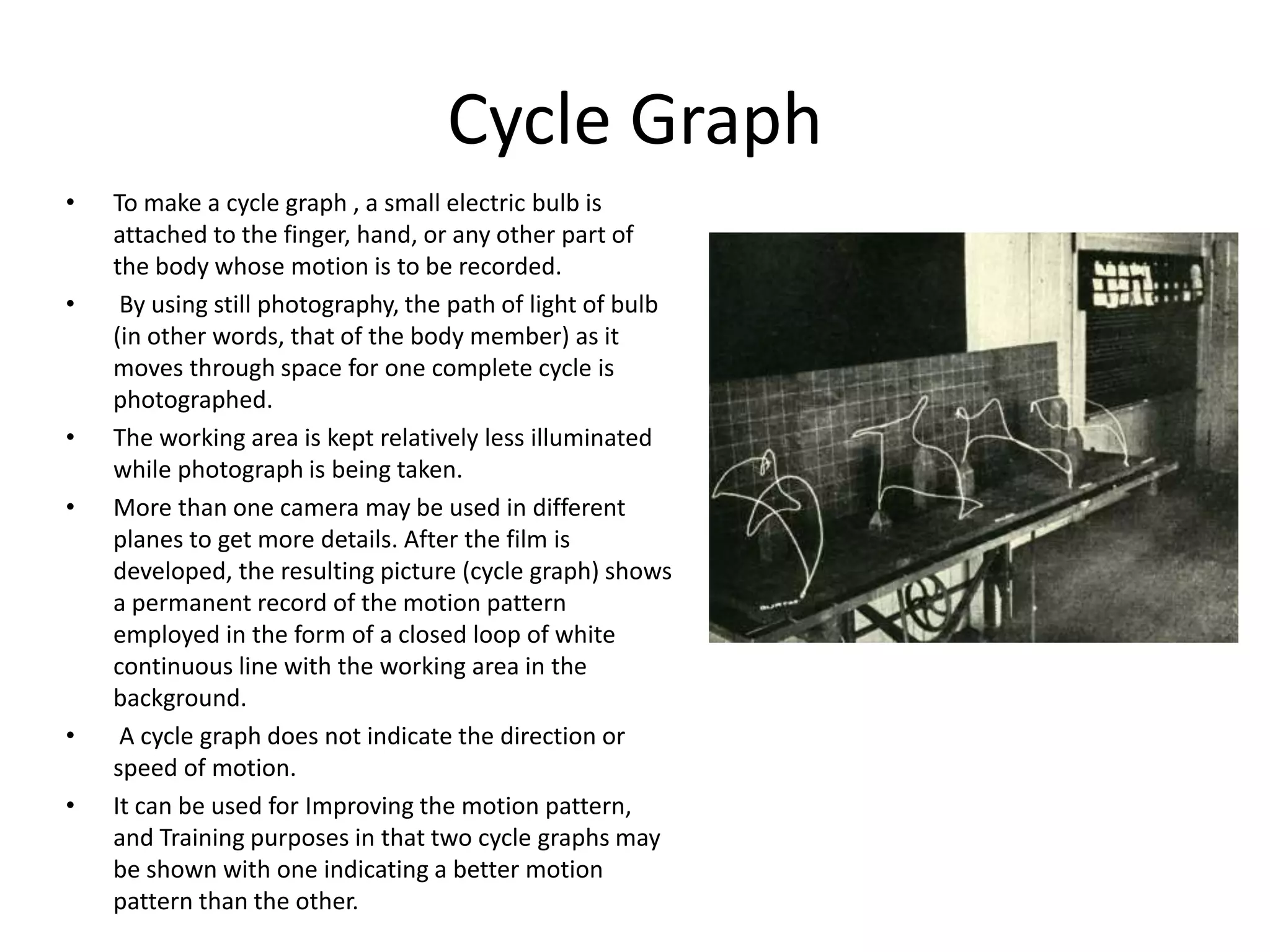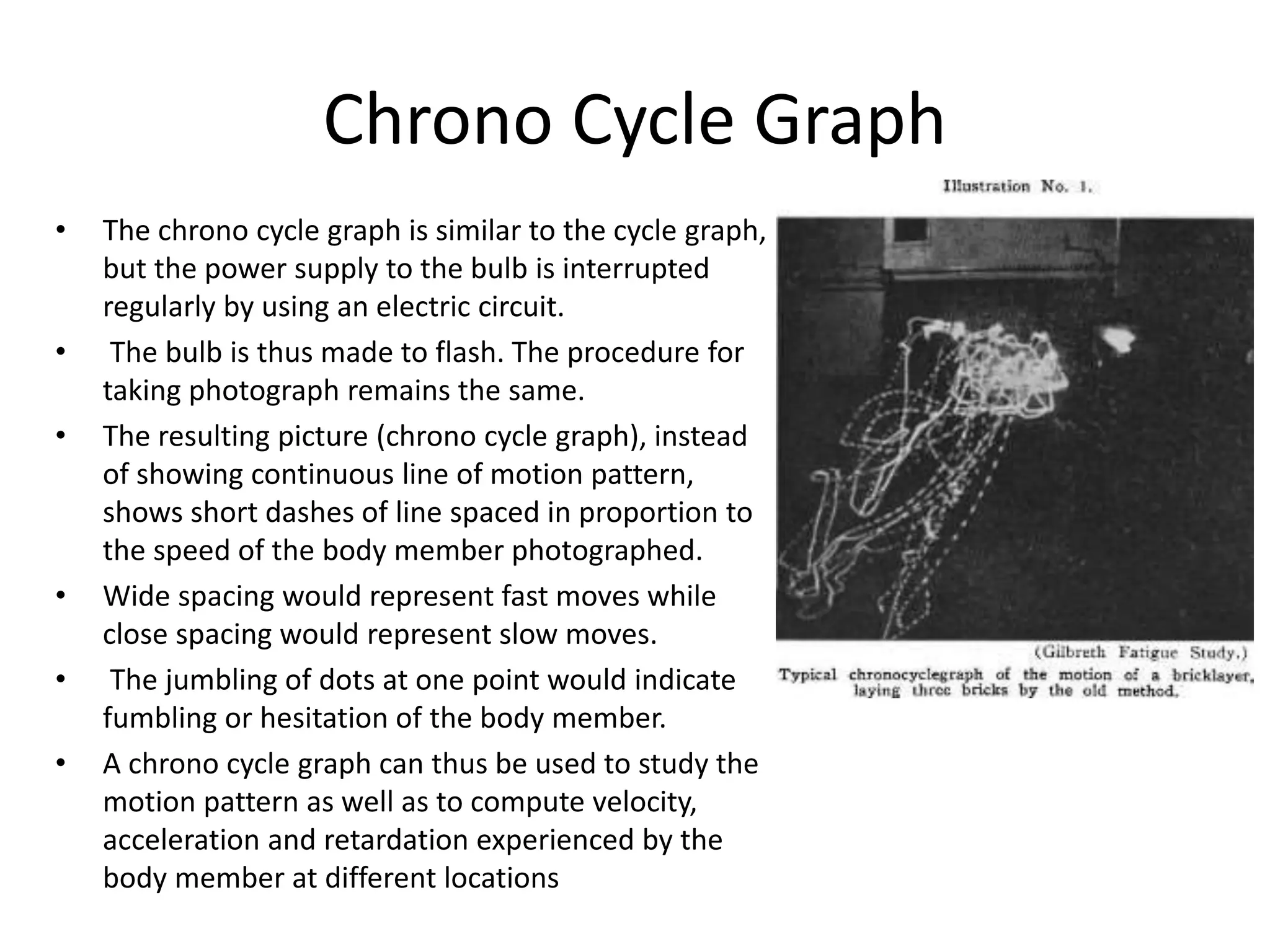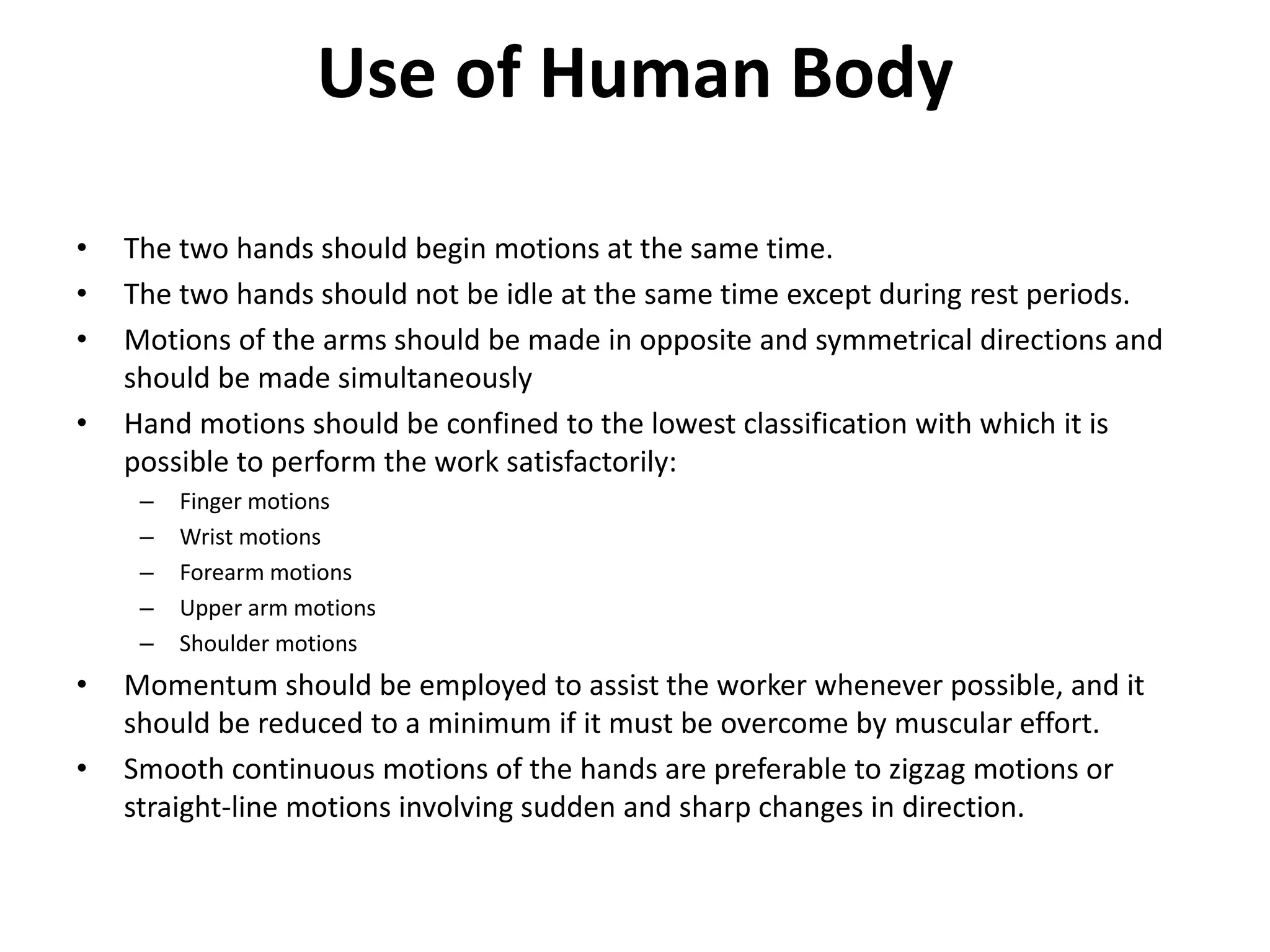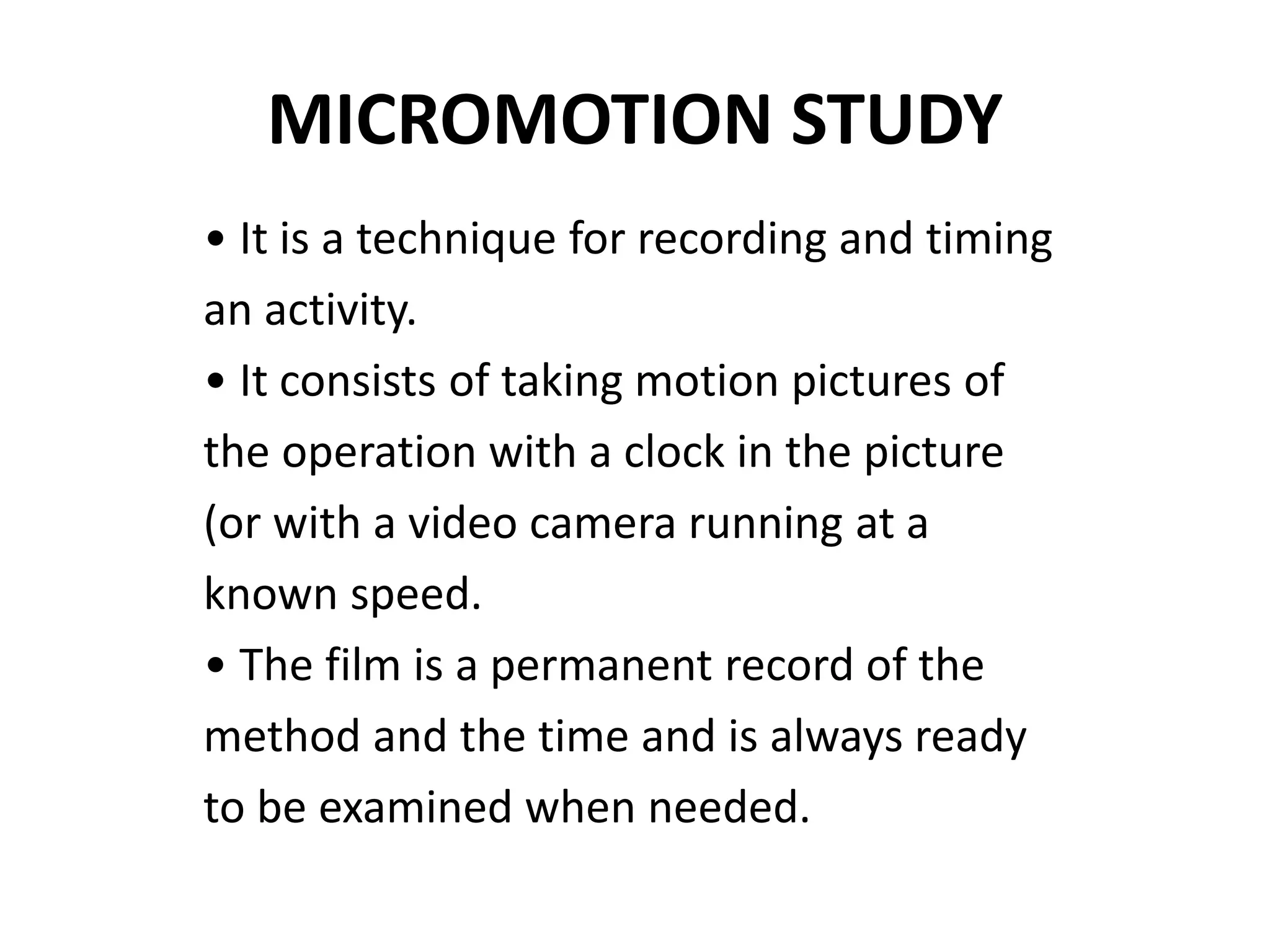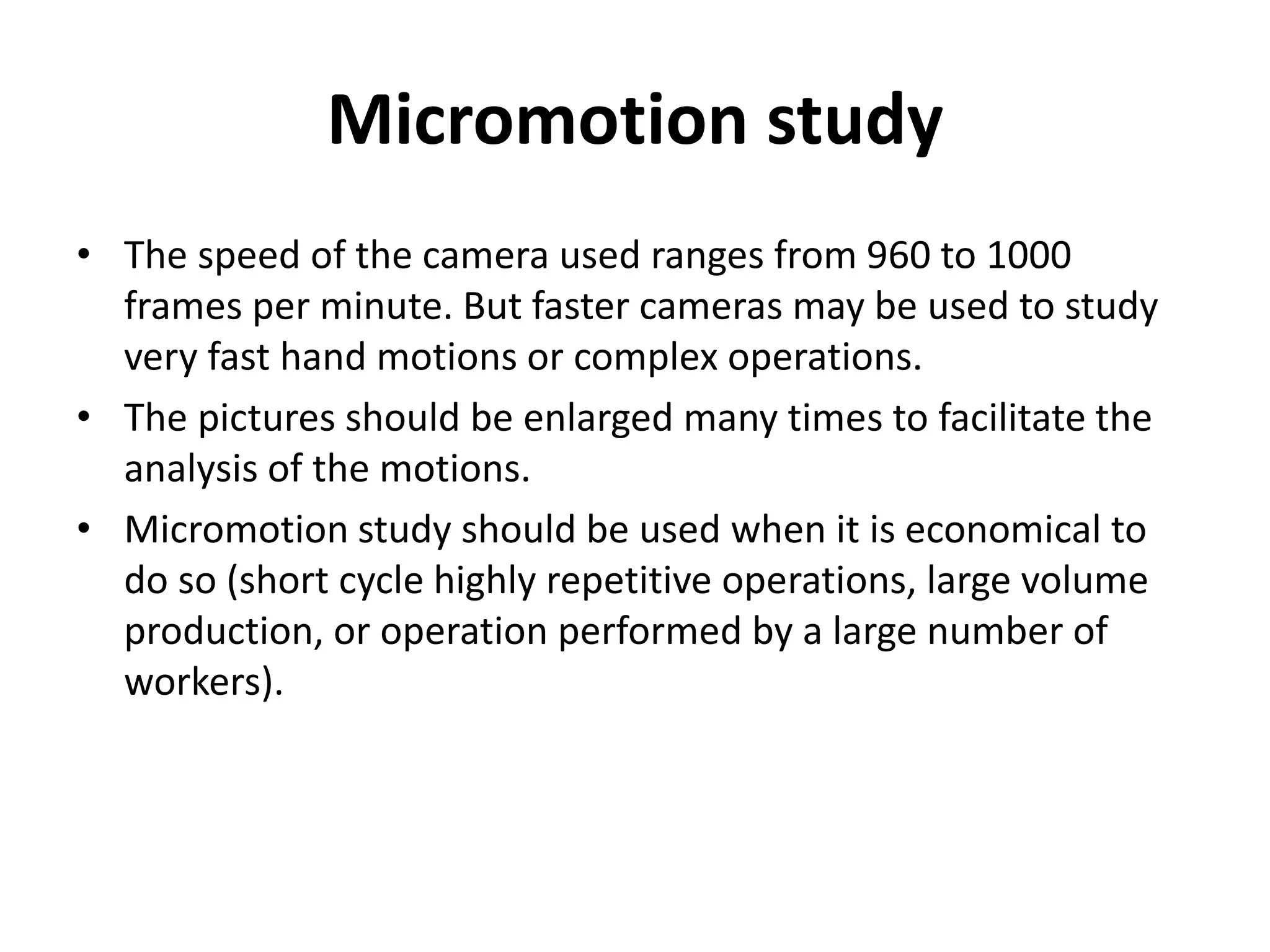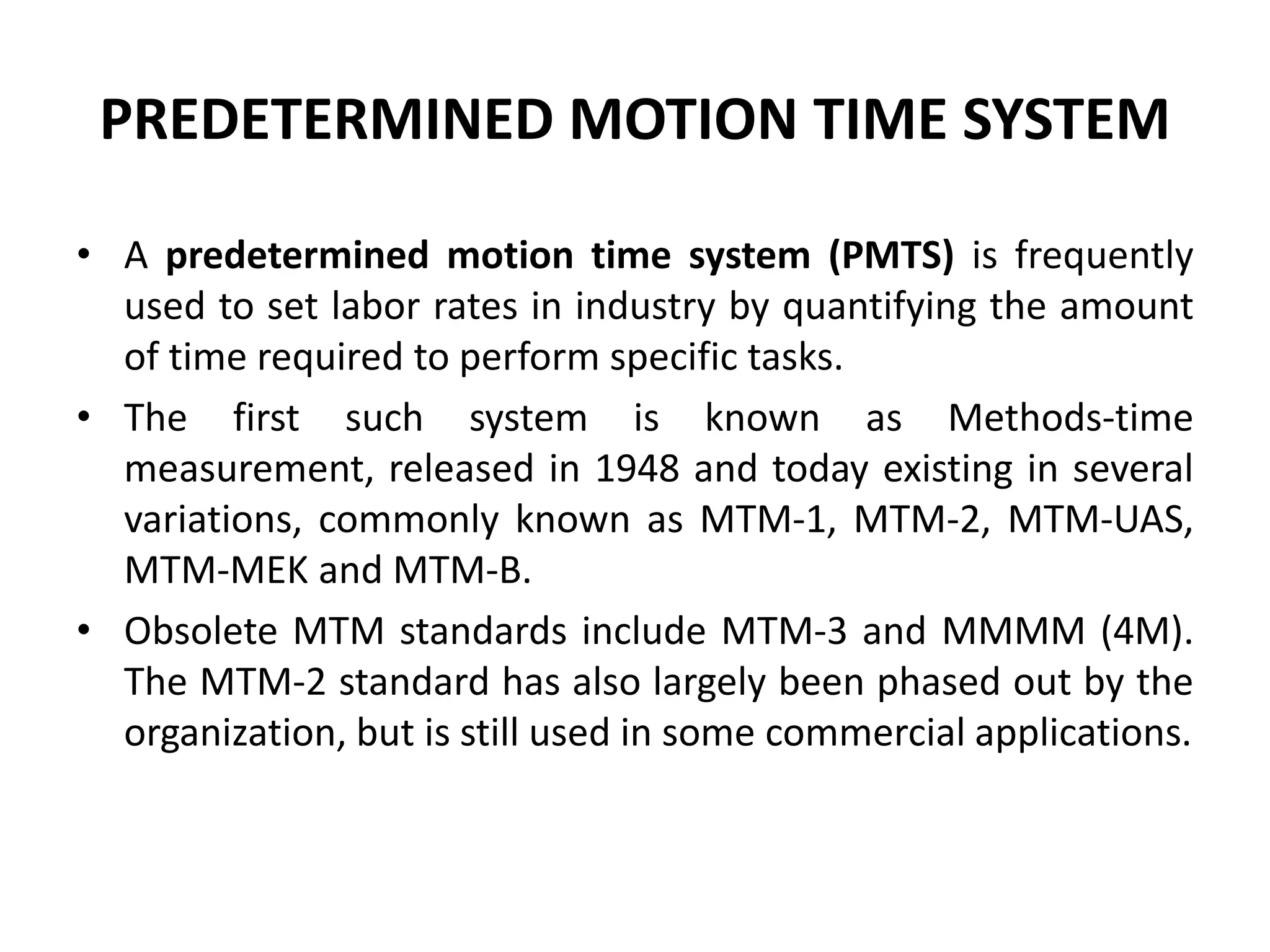The document discusses work study and method study. It defines them, outlines their objectives and basic procedures. Work study aims to utilize resources efficiently while method study examines work processes to develop more effective methods. The key steps in method study are selecting work, recording the current method, examining it critically, developing an improved method, defining and installing the new method, and maintaining it. Various charts and diagrams used in method study are also described such as process charts, flow diagrams and string diagrams.





